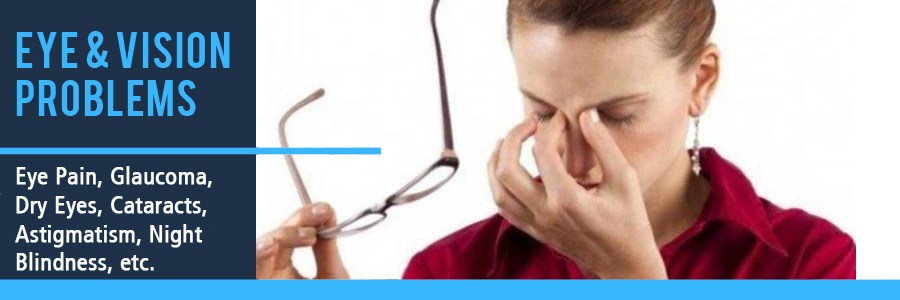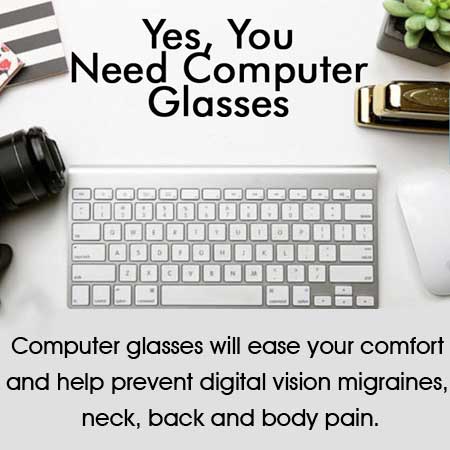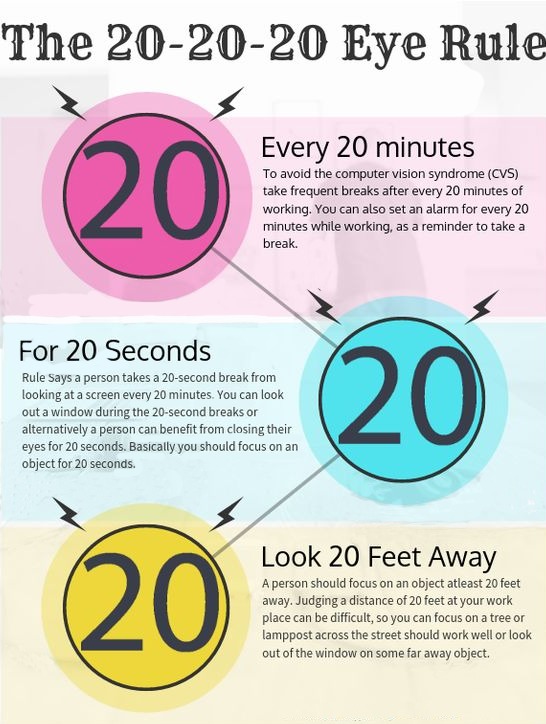
Personalized Eyewear Consultation by Appointment Only (215) 443-7706
- Home
- About
- Products
- Services
- Lens Lab
- Vision Care
- Newsletter
- Contact Us
Menu- Home
- About
- » Doug Wohl
- » Awards
- » Reviews
- Products
- » Bifocals
- » Computer Glasses
- » » Computer Vision Syndrome - Digital Eye Strain
- » Contact Lenses
- » » Are Contacts Right For You
- » » Guidelines for Contacts Wear and Care
- » » Instructions for Soft Contacts
- » Eyeglass Frames
- » » Frame Guide - Frame Shape and Face Shape
- » » Frame Materials
- » » Eyewear Maintenance
- » » Makeup Tips When Wearing Glasses
- » » Wiley X Eyewear Frames
- » Children Eyeglasses
- » » Eyewear for Babies and Young Children 0-5 Years Old
- » » Kids Corner
- » » 10 Tips for Buying Glasses for Children
- » Occupational Eyeglasses
- » Prescription Lenses
- » » Lens Coatings and Tints
- » » » Anti Reflective Coating
- » » Replacement Lens Options
- » Progressives
- » Readers
- » Safety Glasses
- » » Eye Injuries that Could be Prevented with Safety Glasses
- » » Prescription Safety Eye Glass Feature Guide
- » Single Vision Eyeglasses
- » Sports Eyewear
- » Sunglasses
- » » UV Eye Safety
- Services
- » Eye and Vision Exam
- » » Eye and Vision Problems
- » » Glaucoma Test
- » » Vision Refraction
- » Contact Lens Exam and Fitting
- » Eyeglass Repair
- Lens Lab
- Vision Care
- » Cornea
- » Detached Retina
- » Diabetic Retinopathy
- » Dry Eyes
- » Eye and Vision Conditions
- » Fun Eye Facts
- » Eye Function and Parts Explained
- » FAQ
- » Macular Degeneration
- » Makeup Causing Eye Damage
- » Medication Side Effects to Vision
- » Optic Nerve Damage
- » Optical Terms and Definitions
- » Red Eye
- » Retina Damage
- Newsletter
- » Blue Light Blocker Glasses
- » Buying Glasses Online
- » Covid-19 Safety Practices
- Contact Us
- Home Vision Care Eye and Vision Problems
Eyes age as we do. They develop vision-related problems that we may not notice. If you suffer from regular headaches and eye strain, please consider an eye and vision exam.
Common eye strain is generally caused when tiny muscles in the eyes are working harder than they should be because of a visual defect, which can cause headaches. While there’s a myriad of eye and vision-related disorders, those most commonly associated with headaches include:
- Astigmatism – irregularly shaped cornea, people often squint to focus which leads them to experience head pain. Light entering your eye is not focused on a single point on the retina, so objects both near and far become blurred or distorted producing an effect similar to looking through a pane of wavy glass. Treatment is either contact lenses or replacement prescription eyeglass lenses in your eyeglasses.
- Cataracts – clouding of the lenses seen mostly in older people that blurs the vision causing the eyes to work harder and cause headaches. This can be treated by removal of the cataractous lens and replacement by an artificial intraocular lens.
- Excessive Watering - Excessive watering in the eyes can occur due to lots of conditions including allergic and other forms of conjunctivitis, corneal diseases (keratitis) foreign body in the eye, and due to blockage of the tear drainage system.
- Eye Pain - Eye pain can occur in eye conditions like conjunctivitis (pink eye), injury to any part of your eye and inflammatory conditions like Uveitis, Scleritis, and Keratitis. Pain is also experienced in some forms of Glaucoma. Migraine headaches can also result in eye pain.
- Eye Twitching - although alarming to the patient, is not a symptom to be frightened of. It is usually related to stress, poor sleep, excessive caffeine in the diet and poor hydration.
- Glaucoma – this incurable and treatable condition has an unknown origin and causes pressure build-up that is relates to headaches and eye pain.
- Hyperopia – farsightedness, an inability to see objects closeup while far away objects appear in focus. The reason many people get reading glasses at the pharmacy to avoid the issue causing headaches and eye strain. As is the case with problems like being farsighted, getting over-the-counter, non-prescription eye wear can be like putting a band aid on a large gash as a temporary fix. In the case of covering a wound, at least it should eventually heal, but eye conditions are likely to worsen as time goes on. We suggest you get the proper prescription in the frames you use as your readers. Both of your eyes are different and you can be straining your eyes even more using a one-size-does not-fit-all reader.
- Myopia -nearsightedness or blurred vision at a distance. You may have very good close vision. Myopia occurs if your eyeball is too long or the cornea (the clear front cover of the eye) is too curved. As a result, the light entering your eye isn't focused correctly, and distant objects look blurred. Even though the tendency to develop myopia may be inherited, its actual development may be affected by how a person uses his or her eyes. Individuals who spend considerable time reading, working at a computer, or doing other intense close visual work may be more likely to develop myopia. Symptoms of myopia may also be a sign of variations in blood sugar levels in people with diabetes or may be an early indication of a developing cataract.
- Night Blindness - Night blindness is the most important ocular complaint in Vitamin A deficiency and a retinal condition called Retinitis Pigmentosa.
- Presbyopia – with age, the lens can harden, become less flexible and decrease focus on objects up close causing eye soreness and frequent headaches.
It is important that anyone with defective vision undergo a detailed eye examination including eye pressure check and retinal examination to find the cause and take necessary steps. Undergoing only a test of glasses is inadequate and may miss out on sight-threatening conditions like glaucoma.
Digital Vision and Migraine Headaches
Just like the muscles in your body, your eyes can get tired. Doug Wohl sees so many more patients whose eyes have become become strained and fatigued because everyone is sitting in front of a computer, under fluorescent lights or in front of a TV for several hours. This is called visual fatigue; we can show you how to reduce this during your annual eye and vision exam.
Modern work and lifestyle changes have forced us to spend extended hours in close-range activities such as smart phones, computer work, e-books, and hand-held gaming. This is why we always ask patients to talk about their lifestyle which tells us how you need to use lenses, eyeglass frames, contacts and perhaps if you need safety glasses. The increased demands of these activities on your eyes can leave you with uncomfortable and sometimes painful symptoms. For some people, visual fatigue can also lead to reduction in productivity and ability to concentrate—and may even negatively impact your vision health. This also relates to Computer Vision Syndrome.
20-20-20 Rule
The 20-20-20 Rule: Take a break once every 20 minutes and focus on something at least 20 feet away for 20 seconds. This can alleviate eyestrain and work the eye muscles that are not being used while watching a digital screen.
As the presence of technology increases, so do the chances for your children’s vision to worsen. Many kids today are experiencing digital and visual fatigue due to their increased exposure to digital screens. Not only are children spending too much time in front of digital screens, they are sitting too close to the screens as well, leading to visual fatigue. Wohl Optics recommend computer glasses that help you see digital screens better and more clearly. That way, working on your computer won't be such a pain in the neck... or back... or eyes.
About Wohl Optics Vision Care
Proper eyewear prescription AND fit are vital for your best vision. Fit is something that you will never get right with an online optical business. Veteran owned and operated - best in Bucks County Optical eye care shop.
How could your vision be better? What situations do you feel give you trouble when wearing eyeglasses? That is why we are here.
Optical Services, Products and more
Exclusive Discounts
Military, Veterans, First Responders, Police, Firefighters, Ambulance all receive exclusive discounts (not combined with insurance or other discounts).
We accept most major Vision Insurance Plans.
(215) 443-7706 Phone
(215) 443-8795 FaxWohl Optics
550 Street Rd.
Warminster, PA 18974Veteran Helping Veterans - Local Bucks County, PA Independent Optician

Copyright © 2016-2022
All Rights ReservedCredit Cards Accepted

Private Consultations for your Family: Flexible hours at your convenience by appointment ONLY
Wohl Optics Regular Schedule:
Monday 10:00AM - 5:00PM Tuesday 10:00AM - 4:00PM Wednesday 10:30AM - 6:00PM Thursday 10:30AM - 7:30PM Friday 10:00AM - 6:00PM Saturday 10:00AM - 1:00PM We are offering personal appointments to everyone for the selection of eyeglasses and eyeglass adjustments. We will make every effort to accommodate your schedule. Let us know if you would like to meet at Wohl Optics outside of the above regular scheduled hours.
Service Areas
Bucks County, PA; Montgomery County, PA; Chester County, PA; Philadelphia, PA; Warminster, PA; Ivyland, PA; Warrington, PA;Furlong, PA; Warrington, PA; New Hope, PA; Southampton, PA; Bensalem, PA; Northampton, PA; Hatboro, PA; Willow Grove, PA; Huntingdon Valley, PA; Horsham, PA; Lansdale, PA; Montgomeryville, PA; Newtown, PA; Langhorne, PA; Lahaska, PA; Buckingham, PA; Yardley, PA; Chalfont, PA; Richboro, PA; Doylestown, PA; Glenside, PA; Ambler, PA; Fort Washington, PA; Churchville, PA; Norristown, PA; Washington Crossing, PA; Philadelphia, PA.
Wohl Optics 550 Street Rd. Warminster, PA 18974 (215) 443-7706 Privacy Policy HIPAA Sitemap


